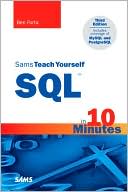Oracle SQL High-Performance Tuning
Targets the #1 Oracle performance bottleneck: SQL and PL/SQL\ For all releases through Oracle 8i\ Detailed case studies and performance measurements\ Large-volume queries, Oracle clusters, Java, parallel query tuning, and much more\ \ Your one-stop resource for all Oracle SQL and PL/SQL tuning and optimization!\ Optimizing SQL code is the #1 factor in improving Oracle database performance, yet most guides to Oracle tuning virtually ignore SQL. Oracle SQL High Performance Tuning, Second...
Search in google:
Targets the #1 Oracle performance bottleneck: SQL and PL/SQL For all releases through Oracle 8i Detailed case studies and performance measurements Large-volume queries, Oracle clusters, Java, parallel query tuning, and much more Your one-stop resource for all Oracle SQL and PL/SQL tuning and optimization!Optimizing SQL code is the #1 factor in improving Oracle database performance, yet most guides to Oracle tuning virtually ignore SQL. Oracle SQL High Performance Tuning, Second Edition zeroes in on SQL and PL/SQL, demonstrating how to achieve performance gains of 100% or more in many applications. Expert Oracle developer Guy Harrison gives Oracle developers and DBAs a single source for guidance on every aspect of Oracle 8/8i SQL and PL/SQL tuning, with specific recommendations, detailed case studies, and real benchmarks. Coverage includes: Designing applications to maximize efficiency right from the start Building indexes that support high-performance queries Identifying and resolving Oracle Server bottlenecks Fixing poorly performing SQL code Identifying opportunities to substitute PL/SQL or Java for SQL Making the most of Oracle's tuning tools, including tkprof and explain Leveraging Oracle's parallel query facility for large-volume queries Maximizing the performance of Oracle clusters Get all the performance and scalability you're paying for — without investing in new hardware! Whether you're running OLAP or OLTP applications, Guy Harrison's Oracle SQL High Performance Tuning, Second Edition shows you how, step-by-step! Booknews A guide for Oracle developers and database administrators, covering every aspect of Oracle 8/8i SQL and PL/SQL tuning, with specific recommendations, detailed case studies, and real benchmarks. Coverage includes designing applications to maximize efficiency, building indexes, identifying and resolving Oracle Server bottlenecks, fixing poorly performed SQL code, and leveraging Oracle's parallel query facility. Harrison is author of several books on Oracle. Annotation c. Book News, Inc., Portland, OR (booknews.com)
Introduction\ This book is about tuning Oracle databases and applications with an emphasis on the tuning of SQL statements. Tuning SQL is not the only way to tune an application: The design of an application will often dictate its performance limits, and tuning the physical layout of an Oracle database can be critical to reaching those limits. However, tuning SQL is usually the most cost-effective way of improving the performance of an existing application, while other measures—such as changing database parameters or altering disk layouts—will usually be ineffective unless the application's SQL is properly tuned.\ It is common for the performance of an Oracle application to appear to be acceptable during development only to degrade abruptly when the application encounters production data volumes or transaction rates. While this may result from a number of causes, inefficient SQL that fails to maintain good performance as data volumes increase is a major factor.\ Poorly performing SQL arises in applications for a number of reasons. Although SQL is a relatively easy language to learn, its nonprocedural nature tends to obscure performance-related issues. As a result, its much harder to write efficient SQL than it is to write functionally correct SQL. Additionally, there seems to be insufficient awareness of the need to monitor carefully and tune SQL performance, and the tools and techniques needed to tune SQL are not sufficiently well known.\ Another factor that has increased the significance of well-tuned SQL is the emergence of data warehouses or On-Line Analytical Processing (OLAP) systems. These databases are often extremely large and are subject to a great deal of ad hoc query activity. If the SQL that supports these queries is inefficient, then queries may take hours or even days to complete or may fail to complete at all.\ When Oracle applications start to underperform, it's typical for performance experts to be called in to perform benchmark tests or tune the Oracle database engine. For the most part, they will tune the operating system, change Oracle configuration parameters, reconfigure input/output (I/O), disks and so on. At the end of the process, you can (if you are lucky) expect a 10 to 20 % improvement in performance.\ During these tuning exercises it is usually that apparent the SQL contained within the application is the most important factor in determining performance. If the SQL can be tuned, then performance increases of 100 percent or more are not uncommon. But there is a dilemma: By the time performance problems are recognized, it is often difficult to make changes to the production SQL. Furthermore, performance experts usually don't have the application knowledge required to understand and tune the SQL, while the developers don't have the necessary understanding of SQL performance tuning.\ It follows that the best way to improve substantially the performance of most Oracle applications is to improve the efficiency of the application SQL. To make this happen, developers needed to acquire SQL tuning skills together with a commitment to tuning.\ The objective of this book is to provide SQL programmers with the theory and practice of SQL tuning together with hints and guidelines for optimizing specific SQL statement types. We'll see how to diagnose and correct problems with existing SQL and briefly explore performance issues beyond SQL tuning, such as application design and server tuning. By following the guidelines in this book, SQL programmers should be able to write SQL that will perform well both in development and in production and will be able to detect and correct inefficiencies in existing SQL. The result will be SQL that performs to its peak potential.\ The need for this book\ With the Oracle server documentation set consisting of more than a dozen manuals—including a tuning guide—and a number of independent Oracle tuning texts on the market, is there really a need for this book?\ There is a need, and the basis for this need lies in two fundamental imperfections in all alternative tuning guides: They are aimed almost exclusively at database administrators (DBAs), and they gloss over the processes of tuning SQL statements. There is a need for a book that is aimed not at the administrators of the Oracle databases, but at those writing the access routines (that is, the SQL) for the database, such as application developers, users of data warehouses, and others whose work involves writing high-performance SQL.\ Additionally, while tuning the database engine can help poorly performing applications, nothing can match improving the efficiency of SQL for getting massive performance improvements. Unfortunately, most tuning texts spend most of their time focusing on database and I/O subsystem tuning.\ Who should use this book\ This is not a book for Oracle DBAs, although DBAs should find many things of interest here. Rather, this is a book for anyone who needs to write SQL that has a performance requirement.\ People who need to write high-performance SQL are as follows:\ \ Developers of Oracle-based applications. These developers will typically need to embed SQL statements within the code of the development tool (such as C++, Java, or Visual Basic). Alternately, the SQL may be contained within stored procedures that they will call from their client tool. These SQL statements will need to be efficient; otherwise the applications concerned will fail to meet reasonable performance requirements.\ Those querying data warehouses or decision-support databases. These databases are typically very large and hence these queries must run efficiently; otherwise they may take an unreasonable time to complete (or not complete at all).\ Anyone who writes Oracle SQL statements and cares about their response time or throughput.\ \ How to use this book\ Few people read a book of this type from beginning to end. Depending on your background, you may wish to skip sections that review database theory and jump right into the details of SQL tuning.\ However, apart from the "Review of SQL" and the "Beyond SQL Tuning" sections, most readers should attempt to read or at least review the majority of this book.\ The book has the following major sections:\ Part I: Introduction to SQL Tuning\ This section contains a review of the importance of SQL tuning, an overview of the tuning process and a review of SQL. The chapters in Part I are as follows:\ \ Chapter 1: Introduction to SQL Tuning\ Chapter 2: SQL Tuning Quick Start\ Chapter 3: Review of SQL\ \ Part II: SQL Tuning theory\ Chapters in Part II introduce a number of important topics, such as the role of the query optimizers, indexing and hashing concepts, SQL parsing, basic data retrieval strategies, and tools for explaining and tuning SQL execution. Although Part II is heavy on theory, its difficult to tune SQL successfully without at least a broad understanding of these topics. All readers are therefore encouraged to read this section.\ The chapters in Part II are as follows:\ \ Chapter 4: SQL Processing Internals\ Chapter 5: The Optimizer\ Chapter 6: Indexing and Clustering\ Chapter 7: Tracing and Explaining SQL\ \ Part III: SQL Tuning in Practice\ Chapters in Part III contain tuning guidelines for specific SQL statement types and circumstances. While it will be useful to read Part III from start to finish, it may also be used as a reference. You may wish to consult the relevant portions of this section as appropriate tuning requirements arise. Chapters in Part III are as follows:\ \ Chapter 8: Tuning Table Access\ Chapter 9: Tuning Joins and Subqueries\ Chapter 10: Sorts, Aggregates, and SET Operations\ Chapter 11: Parallel SQL\ Chapter 12: Optimizing DML\ Chapter 13: VLDB and Warehousing\ Chapter 14: Using and Tuning PL/SQL\ Chapter 15: Using and Tuning Oracle Java\ Chapter 16: Oracle Object Types\ Chapter 17: Miscellaneous Topics\ \ Part IV: Beyond SQL Tuning\ At the beginning of the application life cycle, effective database and application design can define the constraints that will ultimately determine the limits on your SQL's performance. For a well-designed application with tuned SQL, the configuration of your database—disk layouts, SGA configuration, etc.—may be the key to getting further gains in performance. Chapters in Part IV discuss these "beyond SQL" issues:\ \ Chapter 18: Application Design Issues\ Chapter 19: Oracle Server Design\ Chapter 20: Oracle Server Tuning\ \ Appendices\ The appendices contain details of configuring client programs and the Oracle server for specific circumstances, a reference guide, and a guide to further reading and other resources.\ The Sample Database\ Whenever possible, any SQL tuning principle in this book will be illustrated with an example SQL statement. Usually, these SQL statements will be based on the sample database shown in Figure P-1. This database is not intended to illustrate good or bad data modeling principles but to be a basis for illustrating a wide range of SQL statements. You can find an export of one of the variations of this database at the book's website.\ The sample database implements a simple and familiar business schema containing Customers, Employees, Products, and Sales. In addition, the database contains the results from an imaginary marketing survey in the Subjects and Scores table.\ Many different physical implementations of this logical schema were implemented during the development of the book. For instance, the Sales table was subjected to a variety of partitioning schemes, the Customer table was represented in one example as an Index-Organized table, while Subject and Score data were represented in a variety of ways including nested tables, Varrays, and object tables.\ Many of the examples contained in this book are accompanied with a graphical illustration of the performance gains that can be achieved by various optimizations. These performance measurements were collected on a range of computer hardware, ranging from a high-end UNIX host to a Pentium laptop. Performance measurements are shown in either elapsed times or logical database I/Os ("block reads"), whichever was most appropriate to the optimization being performed.\ About Quest Software\ Since writing the first edition of this book, I have had the pleasure to work with Quest Software in the development of software that assists in the tuning of SQL and Oracle databases. In particular, the SQLab Xpert SQL tuning tool implements many of the tuning principles outlined in this book. I have also been heavily involved in the development of Quest's Spotlight on Oracle product, which implements the database tuning philosophies outlined in the final chapters of this book. Because I'm so familiar with Quest products and believe that they make substantial contributions to SQL tuning, I often refer to them in the text of the book. However, be warned that I'm a Quest employee and hardly unbiased when it comes to Quest products.
Preface1Introduction to SQL Tuning12Review of SQL173SQL Processing354Principles of Indexing and Clustering655Tracing Oracle SQL836Tuning Table Access1117Optimizing Joins and Subqueries1578Optimizing Sorting and Grouping1979Optimizing Data Manipulation Statements21710Using and Tuning PL/SQL23311Miscellaneous Topics25912Parallel SQL28713SQL Tuning Case Studies31314Data Model and Application Design33515Building a High-Performance Oracle Database Server36116Tuning the Database Server393App. A: Reference431App. B: Glossary441App. CConfiguring Development Tools447App. DOracle Server Configuration459App. EDifferences Between Oracle Versions471App. FBibliography and Resources475App. G: Contents of the CD-ROM481Index487
\ From Barnes & Noble\ \ Fatbrain Review\ This SQL code optimization guide overviews SQL, focusing on the theory and practice of SQL processes, tuning and optimization. Discusses principles of indexing and clustering, and shows you how to use tools to trace SQL processes. It guides you through practical tuning and optimization of table access, joins, subqueries, sorting, grouping, and data manipulation statements. Analyzing pros/cons of SQL substitution with PL/SQL and the use of parallel SQL, the book presents tuning case studies. Good data model and application design are emphasized. CD-ROM contains trial product versions, freeware tuning toolkit and monitoring utility. Users must be familiar with SQL and ORACLE RDBMS.\ \ \ \ \ BooknewsA guide for Oracle developers and database administrators, covering every aspect of Oracle 8/8i SQL and PL/SQL tuning, with specific recommendations, detailed case studies, and real benchmarks. Coverage includes designing applications to maximize efficiency, building indexes, identifying and resolving Oracle Server bottlenecks, fixing poorly performed SQL code, and leveraging Oracle's parallel query facility. Harrison is author of several books on Oracle. Annotation c. Book News, Inc., Portland, OR (booknews.com)\ \
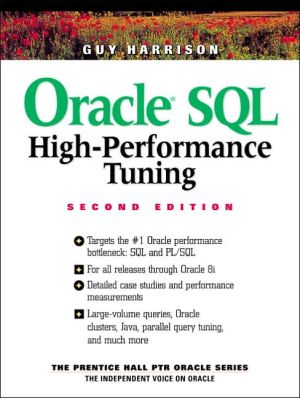
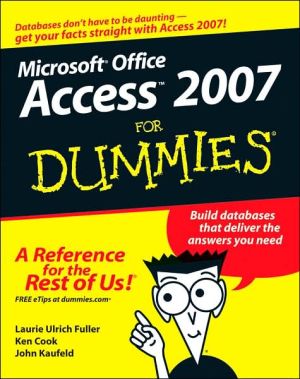

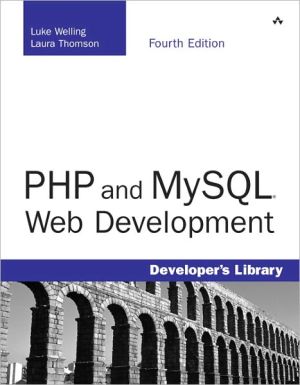
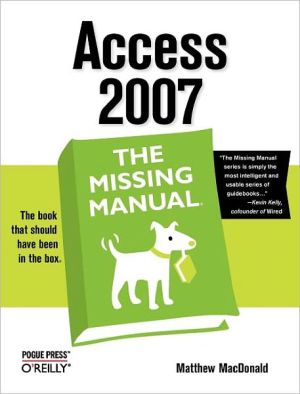
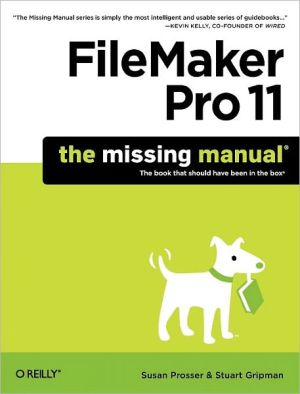
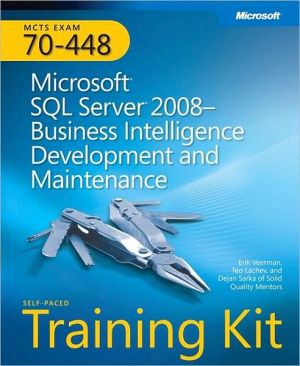
![SQL Queries for Mere Mortals: A Hands-on Guide to Data Manipulation in SQL [For Mere Mortals Series] SQL Queries for Mere Mortals: A Hands-on Guide to Data Manipulation in SQL [For Mere Mortals Series]](/application/data/covers/44/31/9780321444431.jpg)
